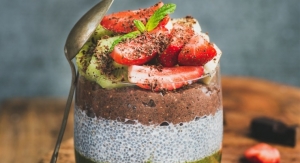By Sean Moloughney, Editor06.03.19
Young people are driving many of the trends in the natural and nutritional products industries today, including limiting or eliminating added sugars; interest in unique flavors from different cultures around the world; and ultimately incorporating convenient foods, beverages, and supplements that make everyday health a little bit easier to manage.
The wellness market has seen many fads come and go, and sometimes resurface. But the fact that millennials are, in many ways, making health a centerpiece of their hectic lifestyles should give companies in this market a positive long-term outlook. Understanding what people need to meet their goals will be critical.
In the modern era, in which consumers are often stretched thin or strapped for time, simplicity can be their best friend. Ultimately, I think that’s why clean labeling has hit home for so many people. Short and obvious ingredient statements with clear product messaging can make purchase decisions much easier for the mom or dad at the grocery store when their toddler is, well, being a toddler.
In fact, when it comes to beverages, according to HealthFocus International, young people and households with kids index higher than most other consumer groups in just about every aspect, including interest in health benefits and convenience. Where simplicity meets functionality should be a sweet spot for brands.
At the same time, flavor is a major motivator. According to the International Food Information Council Foundation’s 2019 Food and Health Survey, the impact of taste on purchasing decisions is up significantly, from 81% in 2018 to 86% this year. Other factors such as price (68%), healthfulness (62%), and convenience (57%) held steady.
Traditionally, taste and healthfulness were often at odds with each other. But as consumers continue to limit sugar intake, innovative sweeteners—coupled with natural flavor and color options—have allowed brands to get creative with their formulations, appealing to clean label, low-carb, and keto diet trends, for example.
So today, if taste is king, health is queen; and the two must work in tandem to deliver a functional product that meets high expectations. Otherwise consumers may just flock to another brand.
The wellness market has seen many fads come and go, and sometimes resurface. But the fact that millennials are, in many ways, making health a centerpiece of their hectic lifestyles should give companies in this market a positive long-term outlook. Understanding what people need to meet their goals will be critical.
In the modern era, in which consumers are often stretched thin or strapped for time, simplicity can be their best friend. Ultimately, I think that’s why clean labeling has hit home for so many people. Short and obvious ingredient statements with clear product messaging can make purchase decisions much easier for the mom or dad at the grocery store when their toddler is, well, being a toddler.
In fact, when it comes to beverages, according to HealthFocus International, young people and households with kids index higher than most other consumer groups in just about every aspect, including interest in health benefits and convenience. Where simplicity meets functionality should be a sweet spot for brands.
At the same time, flavor is a major motivator. According to the International Food Information Council Foundation’s 2019 Food and Health Survey, the impact of taste on purchasing decisions is up significantly, from 81% in 2018 to 86% this year. Other factors such as price (68%), healthfulness (62%), and convenience (57%) held steady.
Traditionally, taste and healthfulness were often at odds with each other. But as consumers continue to limit sugar intake, innovative sweeteners—coupled with natural flavor and color options—have allowed brands to get creative with their formulations, appealing to clean label, low-carb, and keto diet trends, for example.
So today, if taste is king, health is queen; and the two must work in tandem to deliver a functional product that meets high expectations. Otherwise consumers may just flock to another brand.




























